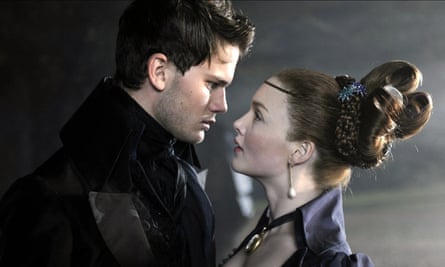What is it about Great Expectations? Peaky Blinders creator Steven Knight’s new dramatisation of Dickens’s novel is the seventh BBC adaptation – the first appearing on screens in 1954. Cinema has loved it too. David Lean’s 1946 film remains the most celebrated but there were three earlier film versions and have been five more since. The 1974 adaptation starred a youngish Michael York as Pip, Dickens’s self-deluding protagonist, obsessed with the unattainable Estella; the most recent was Mike Newell’s 2012 version, scripted by novelist and Dickens aficionado David Nicholls.
Dickens’s fiction has long proved irresistible to dramatisers. Armando Iannucci’s witty 2019 film, The Personal History of David Copperfield, was the 12th major screen adaptation of that novel, yet managed to do new justice to the zaniness of its humour. A Christmas Carol, meanwhile, is the most frequently adapted literary classic in the English language, entertaining exactly because we know it so well. Largely via adaptations, both these novels have come to seem like shared national stories, in which laughter triumphs over mean-mindedness.
All Dickens’s fiction – and any good adaptation – makes you laugh in the midst of what is horrible or sad. In Oliver Twist, Dickens commended “good murderous melodrama”, loved by Victorians, for presenting “the tragic and the comic scenes, in as regular alternation, as the layers of red and white in a side of streaky bacon”. His audacious alternations of tragedy and comedy – or, in Great Expectations, terror and absurdity – provide the entertaining shocks essential to popular entertainment.
In Dickens’s own day, opportunistic dramatists recognised the power of his unexpected comedy. Dramatised versions of his first novel, The Pickwick Papers, appeared on the London stage before the initial serialisation was complete. While the original monthly instalments of Oliver Twist were being published, five adaptations had already been produced in London theatres. Dickens was appalled at the idiocy of most of these, and outraged that he received not a penny from any of them. (Copyright law did not extend to such performances.)

They also reanimate his characters, those complex fools and monsters designed to lodge in the imaginations of his readers over the months that a serialised novel took to unfold. His fellow novelist George Gissing observed: “For 20 months did these characters of favourite fiction make a periodical appearance, and not the most stupid man in England forgot them between one month and the next.”
Like no other writer, Dickens made psychological traits visual and memorable, as if designing characters for the screen. In her tattered wedding dress, Miss Havisham in Great Expectations is a grotesque, but an unforgettable epitome of characteristics that we can all recognise.
Revisiting Dickens on the screen can be like revisiting the subconscious mind, inhabited by frightening or hilarious creatures whom we cannot but remember. Of all Dickens’s novels, Great Expectations has been the most frequently adapted for the screen. Appropriately, we keep returning to this story about someone who tries to escape his childhood – Pip, the blacksmith’s apprentice who will make himself a “gentleman” – but is sucked back into his past. Knight has said that the novel retains its relevance as a powerful analysis of class; it is much more powerful as an imperishable anatomy of childhood fear and guilt. No one renders this like Dickens.
after newsletter promotion

Great Expectations attracts modern adaptors as the most compact and, crucially, the least sentimental of Dickens’s novels. It was to have been his only novel with an unhappy ending – Estella’s brutish husband, Bentley Drummle, has been kicked to death by a mistreated horse, but she has remarried. Pip meets her again in the last chapter, but only for a final parting. Friends told Dickens that this melancholy ending would dismay his readers; he was persuaded to substitute the published ending, where Pip meets the widowed Estella by the ruins of Satis House, Miss Havisham’s former home, and sees “the shadow of no parting from her”.
Screenwriters have invented their own endings. In the Lean film, Pip returns to a still intact Satis House to throw open the shutters and rescue Estella from the darkness. The 1999 BBC version also concludes in still intact Satis House, with Pip playing endless games of cards with Estella, who cannot marry him because Bentley Drummle is still alive. Even in his indecision about his ending, Dickens left a reason to reinterpret his novel, again and again.

